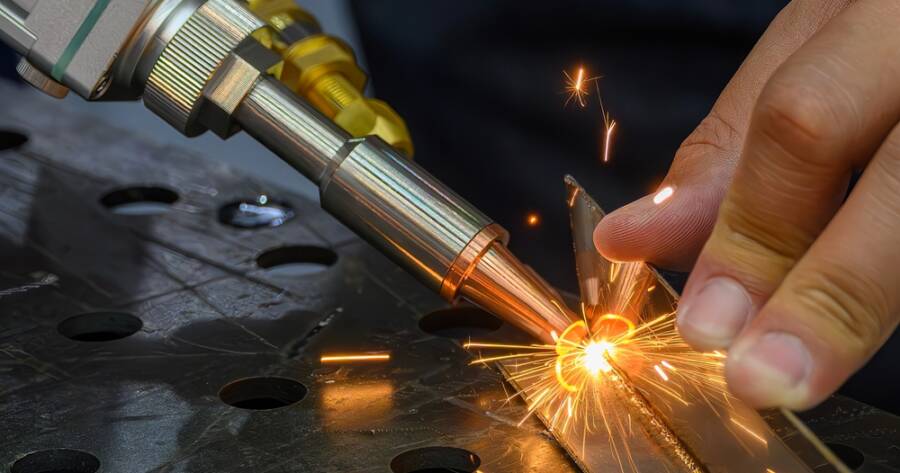The advent of automated welding machines marks a significant shift in manufacturing and industrial sectors, offering numerous advantages over traditional methods. Whether for automotive, aerospace, or construction applications, understanding the benefits of deploying automated welding machines can illuminate paths toward operational excellence. Automated welders are transforming the welding industry by maximizing efficiency and precision. Learn how these technological advancements can revolutionize your welding processes and why they are becoming essential in modern manufacturing.
Enhancing Productivity and Efficiency
Automated welding machines significantly boost productivity levels by minimizing manual intervention and accelerating workflow. These machines complete welding tasks at speeds unachievable through manual labor alone, dramatically increasing production throughput. Automation reduces downtime, as machines can operate continuously with minimal breaks, thus sustaining output levels.
For industries where volume is critical, automated systems can effectively scale operations to meet demand. Reduced cycle times mean production schedules can be streamlined, optimizing delivery timelines. This enhanced productivity ensures projects remain on schedule, and resources are used efficiently. By focusing on efficiency, companies can offer competitive production rates, serving clients more swiftly without compromising quality.
Improving Quality and Consistency
Quality control is paramount in welding, and automated machines raise the bar for consistency and precision. These systems ensure that welds meet exact specifications, reducing the likelihood of defects associated with human error. Automation guarantees uniformity across production runs, which is crucial for sectors requiring high-integrity welds, such as aerospace or medical device manufacturing.
The precision of automated welding also minimizes material waste, as errors are drastically reduced. With standardized procedures, consistency is maintained regardless of volume or complexity. By automating welding processes, companies improve the reproducibility of their products, boosting reputations for reliability and workmanship. Enhanced quality translates to fewer reworks and reduced warranty claims, instilling confidence in both manufacturers and consumers.
Increased Safety and Reduced Risk
Welding involves inherent risks due to high temperatures, bright arcs, and hazardous fumes. Automated welding machines improve workplace safety by minimizing human exposure to dangerous conditions. Operators are distanced from hazardous environments, reducing the potential for accidents and injuries. Implementing automated systems may also alleviate physical strain on workers, decreasing fatigue and enhancing overall well-being.
By shifting personnel duties from manual operations to oversight and programming, companies can foster safer work environments. As safety improves, employee satisfaction and morale may rise, which could lead to better retention and productivity. Reduced risk not only protects employees but also helps companies avoid costly liabilities related to workplace incidents.
Cost-Effectiveness Over Time
While the initial investment in automated welding systems may be substantial, these machines often prove cost-effective in the long run. Automation can lead to labor savings, as fewer operators are needed to manage production lines. With lower labor costs, businesses can allocate resources toward other strategic initiatives or cost-saving measures.
Automated systems also minimize waste and rework expenditures, as consistent weld quality reduces material loss. The reliability and efficiency of automated welding can result in lower operational costs overall. As operational efficiency improves, companies might witness an attractive return on investment, justifying the initial cost and promoting reinvestment in further technological advances.
Advanced Technology Integration
Modern automated welding machines boast innovative technology, enhancing capabilities and performance. Smart welding systems utilize advanced software for programming and control, allowing seamless integration with other production technologies. The advent of IoT (Internet of Things) concepts enables real-time monitoring and data analysis, optimizing production processes further.
Robotics also play a crucial role, enhancing flexibility and adaptability in welding operations. Robotic welding arms can easily adjust to changing specifications or project requirements. Advanced motion sensors and vision systems adapt to variances, ensuring high precision even in complex geometries. The integration of smart technology amplifies the versatility and value of automated systems, propelling the industry forward.
Flexibility and Scalability
Automated welding machines offer exceptional flexibility, adapting effortlessly to diverse tasks and materials. Programmable systems can shift between different welding applications without extensive downtime or reconfiguration. This versatility supports customized production runs and bespoke projects, broadening potential client bases.
As companies grow, scalability becomes a priority, and automated systems can effortlessly accommodate increasing production demands. Modular designs offer the capability to expand operations, integrating additional welding stations or robotics into existing setups. Advanced automation solutions adapt to dynamic industrial trends, encouraging business growth without fundamental infrastructure changes. Flexibility and scalability foster resilience and adaptability in competitive markets.
Environmental Impacts and Sustainability
Emphasizing sustainability is vital in contemporary manufacturing, and automated welding contributes to eco-friendly practices. Greater precision reduces waste and materials usage, aligning with environmental goals. Automated systems may operate on energy-efficient platforms, decreasing overall energy consumption.
By minimizing rework and enhancing throughput, automation reduces emissions from extended operational hours. Additionally, advanced machines can integrate filtration systems to capture hazardous fumes and particulates. This proactive approach to environmental stewardship reflects a commitment to responsible manufacturing. Businesses that prioritize eco-friendliness through automation reinforce their standing as ethical and conscientious operators.
Learn More Today
Automated welding machines offer substantial advantages, injecting efficiency, precision, and innovation into industrial processes. By enhancing productivity, safety, and quality, these systems unlock new opportunities across diverse sectors. Embracing automation promotes long-term cost savings, scalability, and sustainable practices.
Businesses interested in modernizing their operations may find value in exploring automated welding solutions. Remaining informed and adaptable ensures alignment with industry advances. By understanding their transformative potential, manufacturers pave the way for increased competitiveness and growth. Connect with industry experts to explore how automation may bolster business success, fostering technological advancement and improvement.





